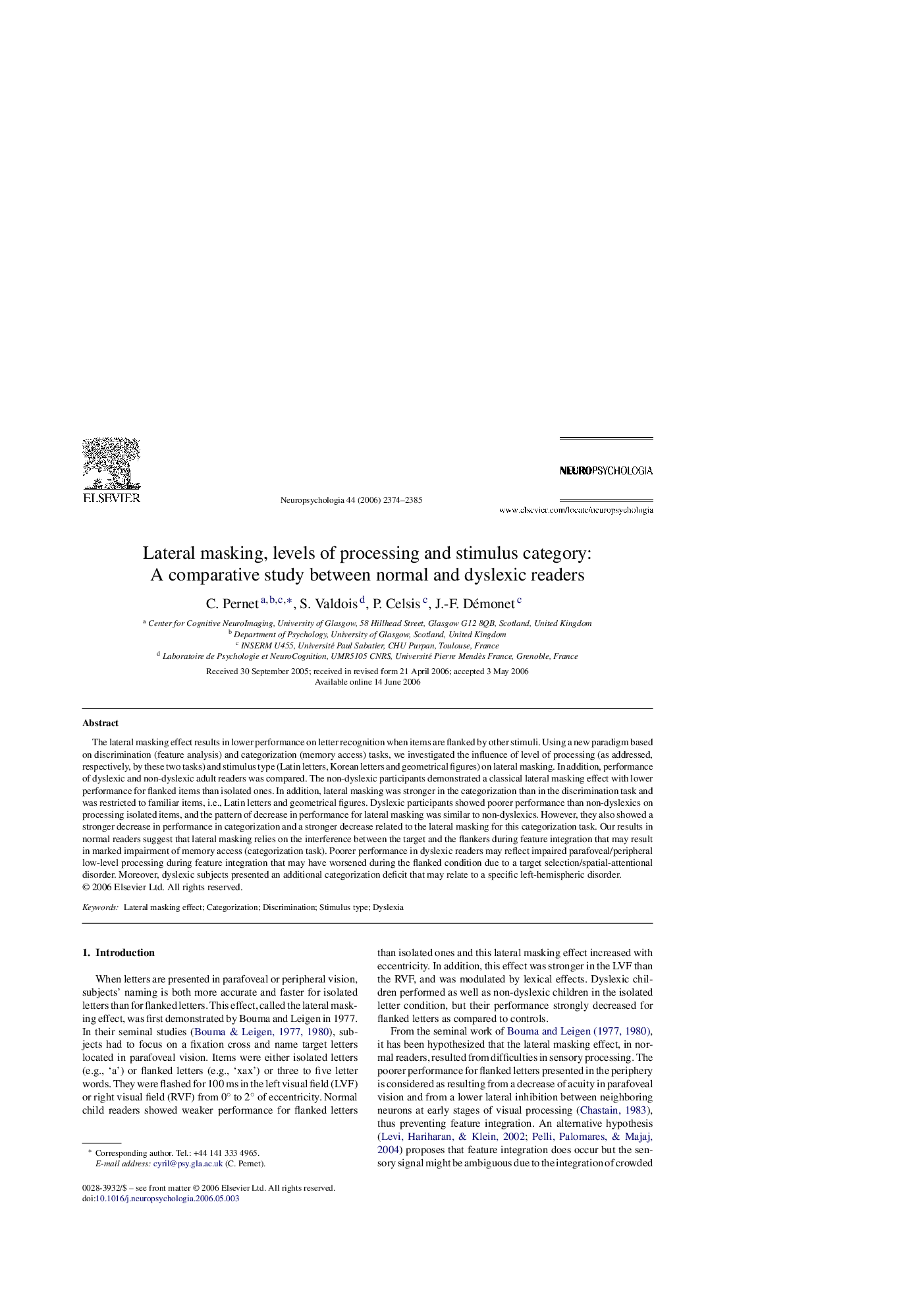| کد مقاله | کد نشریه | سال انتشار | مقاله انگلیسی | نسخه تمام متن |
|---|---|---|---|---|
| 945910 | 925823 | 2006 | 12 صفحه PDF | دانلود رایگان |

The lateral masking effect results in lower performance on letter recognition when items are flanked by other stimuli. Using a new paradigm based on discrimination (feature analysis) and categorization (memory access) tasks, we investigated the influence of level of processing (as addressed, respectively, by these two tasks) and stimulus type (Latin letters, Korean letters and geometrical figures) on lateral masking. In addition, performance of dyslexic and non-dyslexic adult readers was compared. The non-dyslexic participants demonstrated a classical lateral masking effect with lower performance for flanked items than isolated ones. In addition, lateral masking was stronger in the categorization than in the discrimination task and was restricted to familiar items, i.e., Latin letters and geometrical figures. Dyslexic participants showed poorer performance than non-dyslexics on processing isolated items, and the pattern of decrease in performance for lateral masking was similar to non-dyslexics. However, they also showed a stronger decrease in performance in categorization and a stronger decrease related to the lateral masking for this categorization task. Our results in normal readers suggest that lateral masking relies on the interference between the target and the flankers during feature integration that may result in marked impairment of memory access (categorization task). Poorer performance in dyslexic readers may reflect impaired parafoveal/peripheral low-level processing during feature integration that may have worsened during the flanked condition due to a target selection/spatial-attentional disorder. Moreover, dyslexic subjects presented an additional categorization deficit that may relate to a specific left-hemispheric disorder.
Journal: Neuropsychologia - Volume 44, Issue 12, 2006, Pages 2374–2385